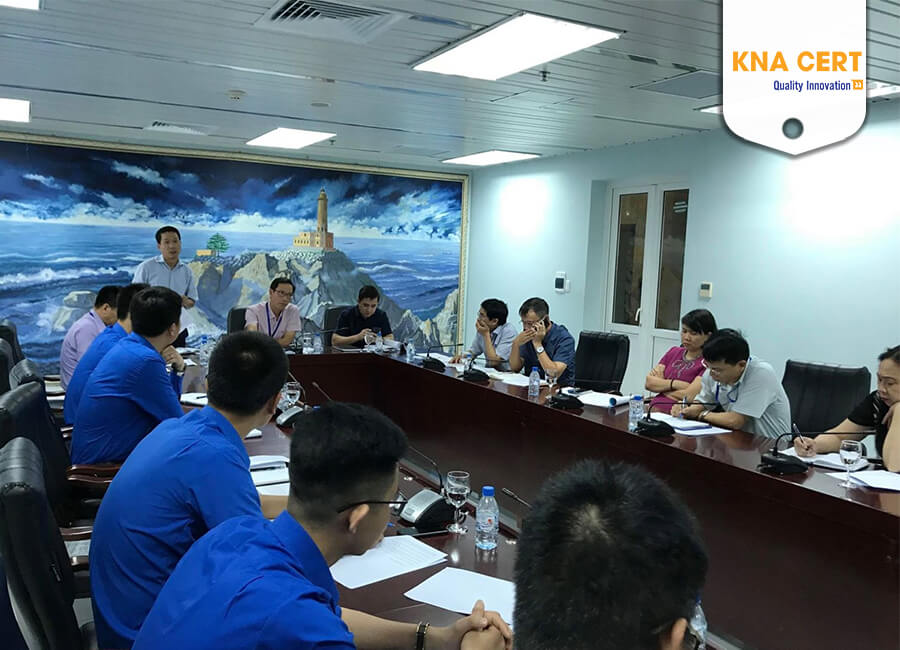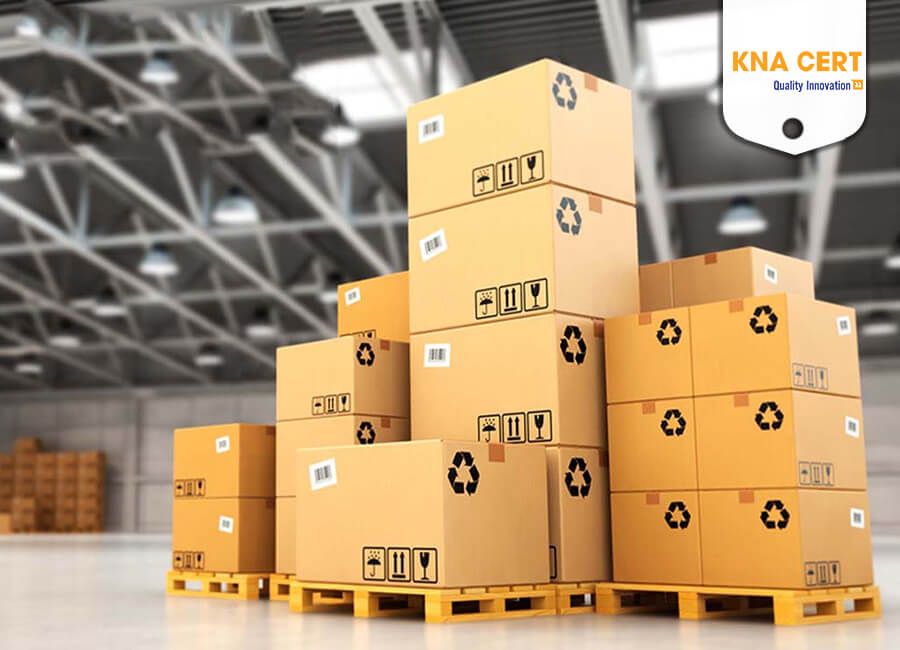7 Comprehensive Steps for Product Quality Inspection
Nowadays, savvy consumers always prioritize product/service quality. Therefore, effective product quality control helps businesses attract and retain customers. Ensuring quality will eliminate price as a significant barrier for your items. Let's explore the 7 most comprehensive steps for product quality inspection with KNA CERT.
Company Quality Management Process
Step 1: Apply Quality Standards
Currently, there are numerous quality standards for different products, including:
- Food standards: HACCP, ISO 22000, FSSC 20000, BRC, IFS, ...
- Quality management system standards: ISO 9001, ISO 17025, ISO 13485,...
- Product standards: CE MARKING, UKCA MARKING, MS (Malaysia),...
- Harmonized standards
In addition, businesses may adhere to certain quality standards set by external agencies and organizations: quality/safety inspections, industry associations, government regulatory bodies, etc.

Apply Standards to the Company's Quality Management
However, certain fields may lack specific quality standards. Therefore, businesses need to develop their own standards. Quality standards in each department within the business may differ, but they share a common requirement: they must be measured objectively.
Step 2: Determine Key Quality Criteria
While everyone aims to ensure quality in all aspects of product production, achieving this seamlessly from the outset is challenging. Therefore, businesses, when starting out, should focus on the most crucial criteria.
Key criteria refer to product/service characteristics directly impacting profitability and customer experience. Prioritizing these criteria enables businesses to save resources and still achieve desired results quickly.
Step 3: Build a Product Quality Management Process
Following the above steps, businesses need to establish a detailed and scientific plan to deploy the most effective quality control process. A well-designed quality management process results in high-quality products/services. Creating a consistent process enhances the quality of products/services.
To develop an appropriate quality management process, businesses must gather comprehensive information about the organizational context, customer requirements, and the needs of relevant parties. Additionally, adhering to key criteria helps design the most suitable process.
Step 4: Deploy the Company's Quality Management Process
Once the product quality inspection procedures have been agreed upon and approved, the next step is to put them into practice. In this stage, employee training assumes a pivotal role. Key personnel and employees directly involved in product/service-related tasks must comprehend their requirements and responsibilities to prevent errors during the work process, ensuring quality output.

Widespread Implementation Throughout the Company
Step 5: Evaluate Implementation Results
Businesses can assess the effectiveness of their processes based on:
- Business software
- Financial applications
- Accounting reports
- Customer management tools
- ...
The information collected will help the business accurately assess its quality management. The company needs to compare the data collected with the initial plans and criteria to determine whether the desired results have been achieved. If not, the reasons why and the areas that need adjustment should be identified. It is advisable for the business to carry out this step multiple times to provide the most visual and accurate insights.
Step 6: Gather Feedback
After evaluating the implementation results, businesses need to conduct internal and external information surveys.
Internal information surveys involve gathering feedback from company employees, examining whether there were any difficulties in implementing the process, and soliciting suggestions for improvements to ensure effectiveness.
External information surveys involve collecting feedback from customers, assessing their satisfaction with products/services, understanding their preferences and dislikes, and determining if they have any suggestions for changes to products/services.
Step 7: Implement Quality Improvements
The final step in the product quality control process is to review, modify, and supplement the company's plan. Each customer stage will have different requirements, and market needs are constantly changing. Therefore, businesses need to continually improve to avoid stagnation.

Continuous Improvement and Enhancement
Quality Product Inspection Processes
Each field and different products will have their own quality inspection processes. Here are some of the most common quality product inspection processes today:
Quality Management Process for Construction Projects
Quality management for materials, products, components, and equipment used in construction projects.
Quality management of contractors during the construction of the project.
Supervision of the construction project by the investor, inspection and acceptance of construction work during the construction process.
Monitoring the author of the contractor's design during the construction of the project.
Control experiments, load tests, and construction inspections during the construction process.
Acceptance of construction phase, section (item) of the construction project (if any).
Acceptance of construction items, completed projects for operation and use.
Inspection of the construction project acceptance work by the authorized state agency.
Compilation of completion records for the construction project, storage of project documents, and handover of the construction project.
Each industry will have different implementation processes.
Quality inspection process for textile products:
- Check color and fabric material.
- Verify product dimensions.
- Assess the quality of stitched seams.
- Inspect design samples.
- Check the quality of zippers.
- Assess the product's stretchability.
- Inspect labels attached to the product.
- Verify button placements.
- Check logos and slogans.
Quality inspection process for food products:
- Provide guidance and train employees on food quality.
- Choose reliable food suppliers.
- Forecast sales to avoid excess or insufficient raw materials.
- Cross-check materials between the receiving department and the kitchen.
- Strictly manage food inventory.
- Hire a quality assurance manager if necessary.
- Document and store food production procedures.
- Ensure all necessary food safety certifications.
- Quality inspection process for mechanical products:
Check input materials.
- Inspect machinery and equipment.
- Evaluate design and processing.
- Inspect at each stage of production.
- Check technical specifications.
- Perform quality testing and evaluation according to standards.
- Key considerations when conducting product quality inspections:
Define the inspection objectives: Clearly identify what aspects of the product you want to inspect, whether it's technical features, durability, performance, or other factors.
Set standards: Establish specific standards for the product based on customer requirements, industry standards, and relevant international standards.
Select representative samples: Know how to sample in a way that the samples represent the entire batch. This helps avoid testing based on only a few good products while overlooking those with issues.
Use appropriate tools and equipment: Ensure the use of testing tools and equipment that match the product's characteristics. These tools and equipment must be properly calibrated to ensure accurate and objective test results.
Follow the inspection process: Ensure adherence to the inspection process with specific steps. Following the process helps ensure that no steps are skipped, and every aspect is thoroughly checked.
Record comprehensively: Document detailed and accurate results of the inspection. This not only helps track progress but also provides evidence of product quality.
Handle defective products: If substandard products are found, establish a clear process for handling defective items. This may involve repairs, re-production, or disposal/recall of the products.

Ensure that defective products are processed according to the correct procedures.
Ensure Objectivity
The quality inspection process needs to be conducted objectively and not influenced by emotions or personal biases.
Training and Skill Enhancement
Ensure that those performing inspections are thoroughly trained and well-versed in the procedures, tools, and relevant standards. Regularly organize training sessions to enhance their capabilities, making the process more effective over time.
Feedback and Continuous Improvement
Utilize the results of inspections to enhance production processes and quality control in the future. Quality management is an ongoing process, constantly striving for improvement to elevate the quality of products/services.
The above information covers the steps for product quality inspection and considerations in the quality management process. If your business needs to apply for and achieve quality certification for its products/services, please contact ISO KNA via Hotline: 0968.038.122 or Email: salesmanager@knacert.com for the earliest support.







